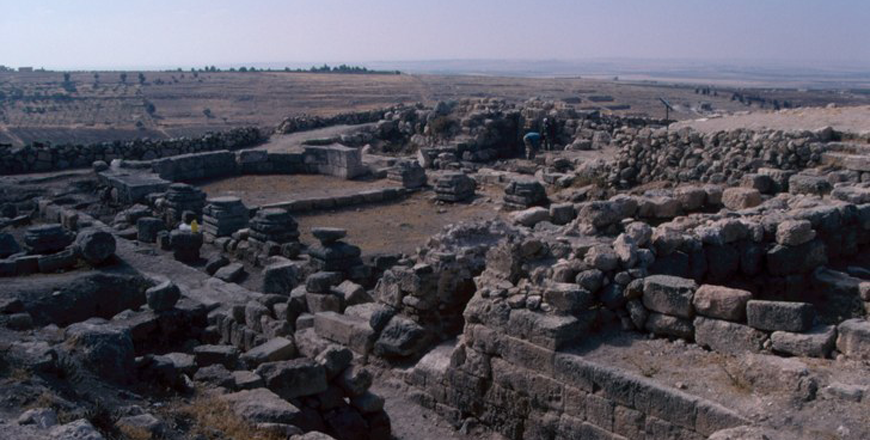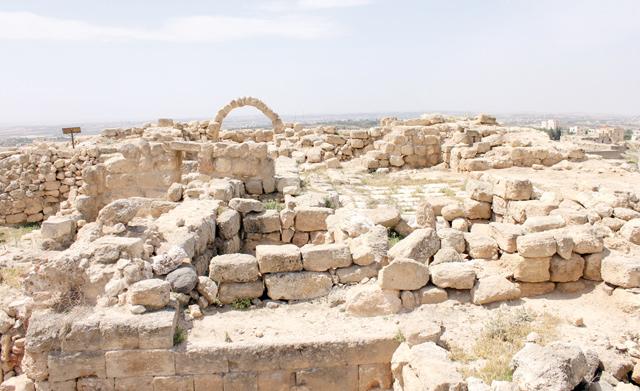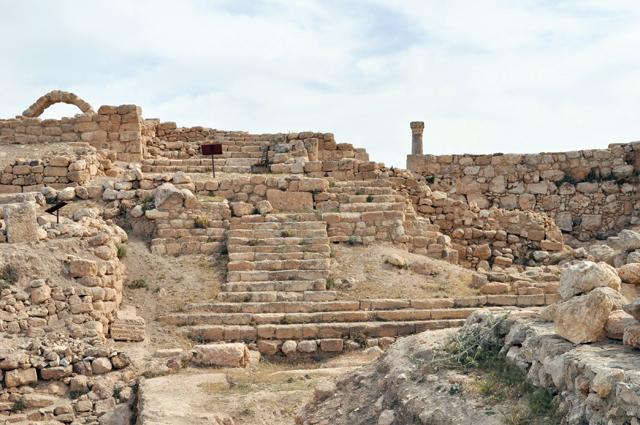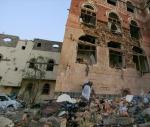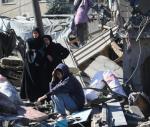You are here
Tell Hisban, ‘granary of the empires’, offers insight into regional history of agriculture
By Saeb Rawashdeh - Jan 18,2022 - Last updated at Jan 18,2022

A restored foundations of the Byzantine basilica in Tell Hisban (Photo courtesy of Ivan LaBianca)
AMMAN — Tell Hisban, located in the Madaba Plains, represents the “granary of the empires”, noted an American archaeologist.
The site, covering some eight hectares, had significant cereal production, Bethany Walker, a professor at the University of Bonn, Germany, said.
“During the Mamluk Empire, Tell Hisban was an important pigeon spot between Damascus and Cairo as the postal communication was conducted by specially trained pigeons, and the site was on the pilgrimage route between Cairo and Damascus,” said Walker.
A Mamluk citadel occupies the hilltop and under the hill was a densely populated village comprised of clusters of one–room farmhouses with shared courtyards and cisterns, Walker continued, adding that the site reached political and social prominence during the 14th century.
During the reign of Sultan Al Nasir Muhammed (1310-1340), Tell Hisban became an administrative centre with the status of district capital with a military garrison, the scholar explained.
She noted that state investment helped the urbanisation of the village and the souk in Tell Hisban, providing agriculture produce for the central highlands of Transjordan.
“In the Ayyubid period [1171-1260] a madrasa was built and Tell Hisban also became a centre for Islamic teaching, with lawyers specialised in Sharia going to Cairo and other centres,” Walker said, adding that the village had its own court and a judge.
Tell Hisban’s participation in the interregional markets was primarily based on its cereal production, she said.
Walker explained that recent botanical research at the archaeological site has documented the most important developments in this regard in the 14th century: Diversification of cereal production and intensification of the production of wheat, in particular through irrigation.
She noted that such patterns of cultivation can be associated with a “cautious balance between market production and buffering”.
“These decisions were made by cultivators themselves not by any state imperative or policy. Even the economic pressure of taxation would not account for the selection of specific cereals,” Walker said, noting that the size of cereal production is suggested by the size and number of storage facilities.
Cereal production was the most taxable commodity at Tell Hisban in 16th century, although by the end of the century nobody lived in the village, she highlighted, adding that these storage facilities were therefore most likely from the Mamluk period.
“Large quantities of grain were stored in the fortress of Tell Hisban in 18th and 19th centuries, and with the grain boom in mid-19th century, cereal was massively produced and transported to Palestinian ports,” Walker said.
The 16th century represents “a turning point” in the relationship between the local community and large-scale commercialisation of agriculture, the professor said.
“The foundations for these changes were laid during the late Mamluk period, due to the growing number of opportunities available to villagers to buy and sell farmland,” Walker said.
Related Articles
AMMAN — The Ottoman conquest of the Levant in 1517 had an impact on the economic models of the Mamluk dynasty that ruled the area from
AMMAN — There has been a boom in studies devoted to the Mamluk period (1250-1517) due to a recent “rural turn” in Islamic archaeology, accor
AMMAN — By the 14th century, Tell Hisban, located around 25km south of Amman, significant centre of pottery, according to a Syrian scholar.T


